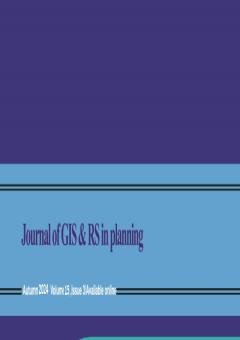The impact of geomorphological effects on urban physical vulnerability with passive defense approach using geographic information system (case study: Shiraz city)
Subject Areas :
mohsen koohpiyma
1
,
Marziyeh Mogholi
2
*
![]() ,
Mohammad Ebrahim afifi
3
,
Mohammad Ebrahim afifi
3
1 - Ph.D. Student of Geography, Larestan Unit, Islamic Azad University, Larestan, Iran
2 - faculty member Department of Geography, Larestan Branch, Islamic Azad University, Larestan, Iran
3 - Assistant Professor, Department of Geography, Larestan Branch, Islamic Azad University, Larestan, Iran
Keywords: Assessment, vulnerability, earthquake, passive defense, Shiraz city,
Abstract :
Today, despite human scientific progress, natural phenomena are not fully known to humans. Human settlements have always been threatened by these natural disasters. Iran is located in one of the most earthquake-prone places in the world, and it is necessary to always take countermeasures and take a logical approach to minimize the catastrophic dimensions of such an event. Urban logic and especially dilapidated structures are not excluded, and their fate and fate are always subject to irreparable disasters after any natural or unnatural incident. In cities, population density and wealth constitute the main problem, and as centers of accumulation of material and human capital in times of war, they become a major target for the enemy.Targeting cities and damaging urban infrastructures is done in order to weaken the morale and cause economic damage and disintegration of the social system. On the other hand, the citizens of a country are made up of people who cannot all be considered active combat forces, such as children, teenagers, women and the elderly. In addition to surprising the officials, the damage caused by the attack on the infrastructure always imposes a lot of costs and turns into other types of damage, including political, economic and cultural. In urban areas, war injuries include a combination of physical ruins and malfunctioning of urban elements. Destruction of structures and buildings, road and access networks, basic facilities of water tanks, power plants, telephone, electricity, water and gas communication lines.Therefore, efficient planning in the field of urban security, based on the passive defense approach, can minimize human and financial losses when human and natural crises occur in cities

